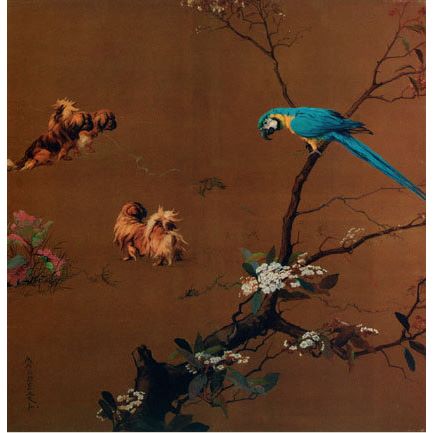
It’s our last clue about tomorrow’s Purebred of Interest before we announce the breed in a couple of hours: Depictions of dog resembling this breed appear on ancient Chinese handiwork, pottery and temples. It’s not the Pekingese seen in this painting.
Upkeep of the ancient Pekingese fell to the eunuchs of the Imperial Palace in the 19th century, though it was the Dowager Tzu Hsi who took great care in the breeding of these dogs to achieve desirable colors and markings. Rather than let the dogs fall into the hands of the “infidels,” when the British invaded the palace in 1860, all but five Pekes were killed at the hands of their owners, and those five were found guarding the body of the Emperor’s aunt. Edward C. Ash wrote in Dogs: Their History and Development: The Pekingese dog represented to the Chinese mind a symbol of the great protector of the faith – the Buddha’s lions, which when the necessity arose, were produced by stretching forward his hand, his fingers changing into five of these lions, which, roaring with a voice the shook the heavens, brought enemies into subjection.”
“Three Pekingese with a Macaw” by Maud Earl (1923)
